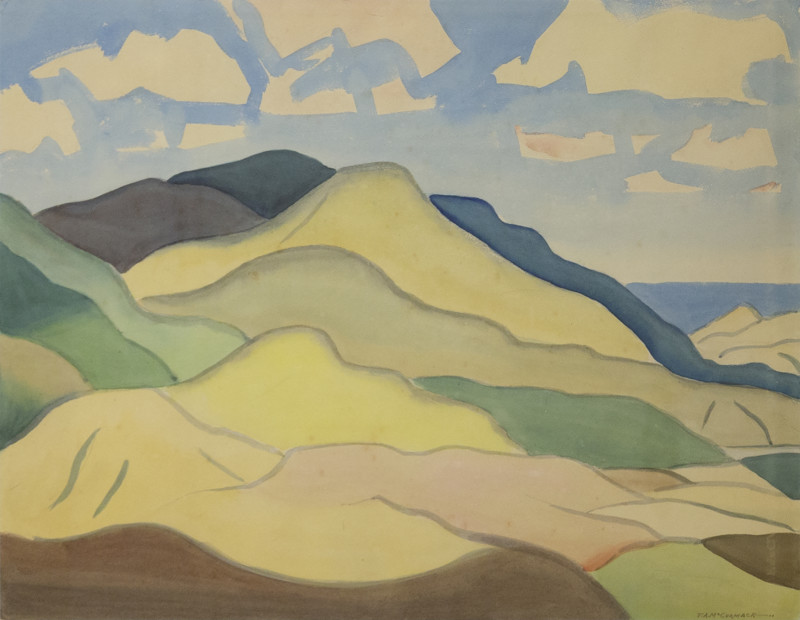Thomas Arthur McCormack was born in Ahuriri Napier. At school, he excelled in drawing; apart from lessons in pen and ink drawing from R. D. Anderson, an English landscape painter who taught at Napier Technical College, he received no formal training. He left Ahuriri in 1921, moving to Te Whanganui-a-Tara, where he remained, becoming a full-time professional artist and using the Hill Street studio occupied by D. K. Richmond. His earliest Wellington subjects show his penchant for the coast and the juxtaposition of sea and sky. His watercolours from the late 1920s and early 1930s ‘could almost be confused with those of his friend Nugent Welch‘, although McCormack’s adventurous disregard for topographical truth in favour of something more suggestive contrasts with Welch’s more conventional approach.[1]
The broken brush-strokes and high-key colour associated Impressionism are noticeable in McCormack’s work. So is his debt to watercolours and prints from China and Japan. In 1937, he paid many visits to an exhibition of Chinese art at the Dominion Museum (later the Museum of New Zealand Te Papa Tongarewa), one of a number of exhibitions staged in Aotearoa at the time that were to have a profound influence on McCormack, Rita Angus, and Leo Bensemann, among others. His work became increasingly less decorative and more experimental. Anne Kirker has noted, ‘He adopted an almost unlimited range of brushwork, from the most sensitive and light touches to the assertive boldness of swiftly applied strokes.’[2] He also began to use toned paper, usually in a warm buff colour.
His imagery always appealed to the connoisseur rather than to the lay person, as did his restrained, even reticent colour. In the 1940s and 1950s, his paintings grew larger in size and the treatment still more abbreviated, as in Landscape, Hawke’s Bay. Throughout his long and productive career, McCormack achieved a uniquely independent vision, which matured almost solely in the confines of Aotearoa and with the resources found here. Except for eight months spent in Australia in 1928, he never left this country.
A more extensive biography is available on Te Ara The Encyclopedia of New Zealand.
[1] Anne Kirker, ‘T. A. McCormack: A New Talent to Emerge in the Nineteen-Thirties’, Art New Zealand 27 (Winter 1983).
[2] Ibid.
